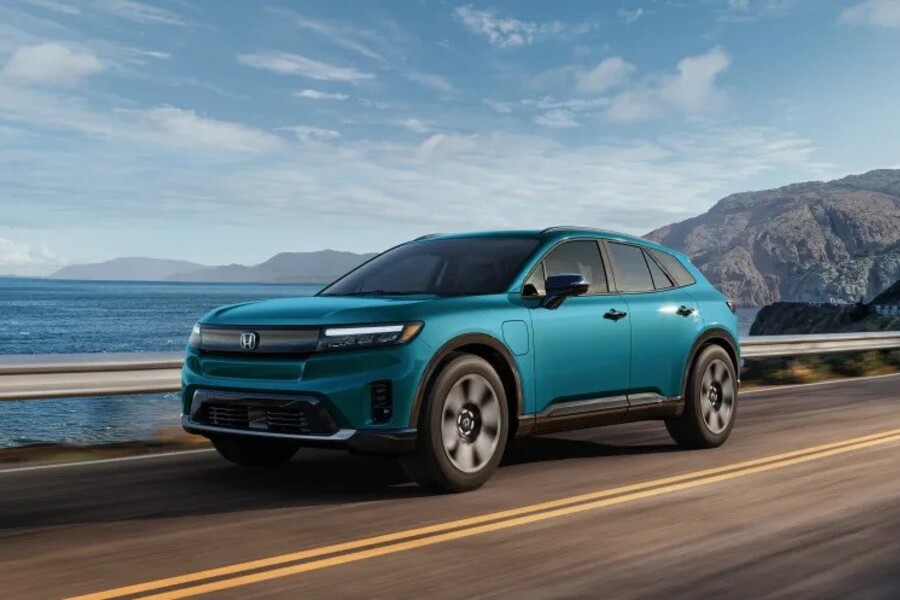Honda and Acura electric vehicle owners are set to gain broader access to public fast-charging thanks to a new move announced by the automakers. Starting in June, drivers of the Honda Prologue and Acura ZDX will be able to connect to Tesla’s expansive Supercharger network via an officially supported NACS-to-CCS adapter.
According to a press release from Honda, the NACS adapters will unlock access to more than 20,000 compatible Tesla Superchargers across the United States. These will be available for purchase through Honda and Acura dealerships, though pricing details have not yet been disclosed.
The news marks a significant advancement in Honda and Acura’s electric vehicle strategies, aligning them with a growing industry trend. Tesla’s North American Charging Standard (NACS) has become a go-to charging format for many automakers looking to offer their customers fast, reliable charging options. Honda and Acura now join the ranks of BMW, Ford, General Motors, Hyundai, and Kia in either adopting or supporting the NACS interface.
Not all Superchargers will be accessible to Prologue and ZDX owners, but compatible locations will be viewable via the HondaLink and Acura EV apps. These applications will also notify users when and where they can purchase the adapters, as well as display real-time charging availability.
The timing of the adapter announcement coincides with the rollout of the 2025 Honda Prologue model, which the company says will deliver improvements in range and performance without a price hike. Honda emphasized that the Prologue finished 2024 as the top-selling non-Tesla EV in the U.S. market during the fourth quarter, signaling growing momentum for its new electric offerings.
On the Acura front, the ZDX is also expected to benefit from the adapter availability, although the model does not appear to be receiving any major updates for 2025. Experts suggest this could be because the ZDX already delivers superior specifications compared to the Prologue.
EPA ratings for the 2025 Prologue and ZDX have yet to be posted, but industry observers anticipate slight gains in range and efficiency. The vehicles share GM’s Ultium platform, which is being used across a wide array of next-gen electric vehicles.
The broader implications of the adapter rollout are significant. One of the biggest criticisms of the current EV landscape is the lack of universal charging access and consistency. Tesla’s Supercharger network is widely considered the most dependable and fastest-charging system in the country. For Honda and Acura owners, gaining access to this network removes a key barrier to EV adoption.
This move also benefits Tesla, which now stands to profit from servicing non-Tesla drivers. Federal incentives tied to the Inflation Reduction Act further encourage Tesla to open its charging infrastructure to other brands. As a result, Tesla earns revenue and goodwill, while drivers across multiple automakers gain convenience.
For Honda and Acura, the addition of Supercharger access provides a major selling point. As EV competition intensifies, convenience, charging infrastructure, and real-world usability are increasingly becoming key differentiators in customer purchasing decisions.
Industry experts see this shift as part of a larger evolution toward standardization in EV charging. While some automakers are planning to implement NACS ports natively in upcoming models, adapters serve as a crucial transitional bridge that ensures compatibility for existing vehicles on the road today.
To support the rollout, Honda and Acura are preparing their dealer networks for customer inquiries and adapter distribution. Mobile apps will serve as a central hub for users to locate charging stations, confirm compatibility, and receive support materials.
Ultimately, this latest announcement positions Honda and Acura to offer a more competitive and user-friendly EV experience. By aligning with Tesla’s leading infrastructure, both brands are reinforcing their commitment to expanding their electric presence in North America.
The adapter rollout represents not only improved access to fast charging, but a larger step toward collaborative, cross-brand solutions in the electric era—where convenience, compatibility, and consistency reign supreme.

